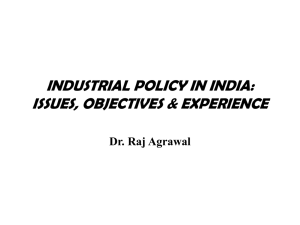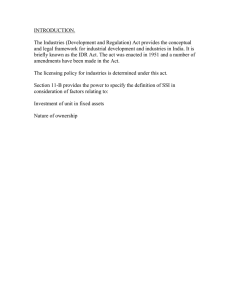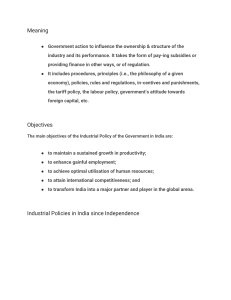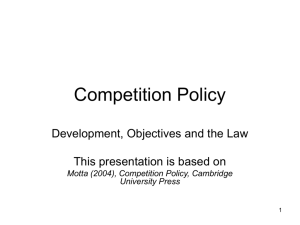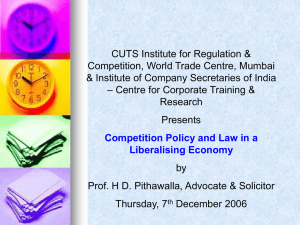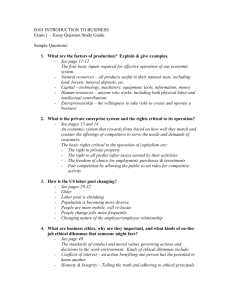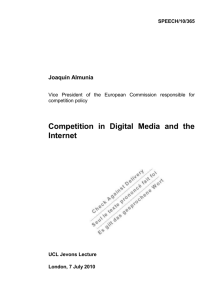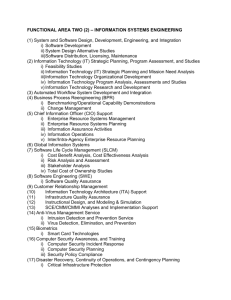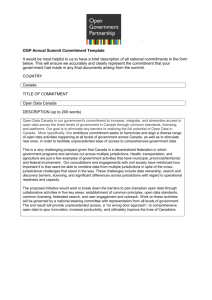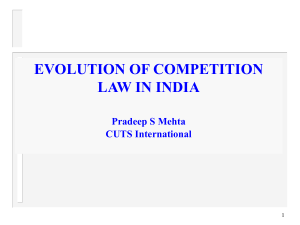industrial-policy2
advertisement
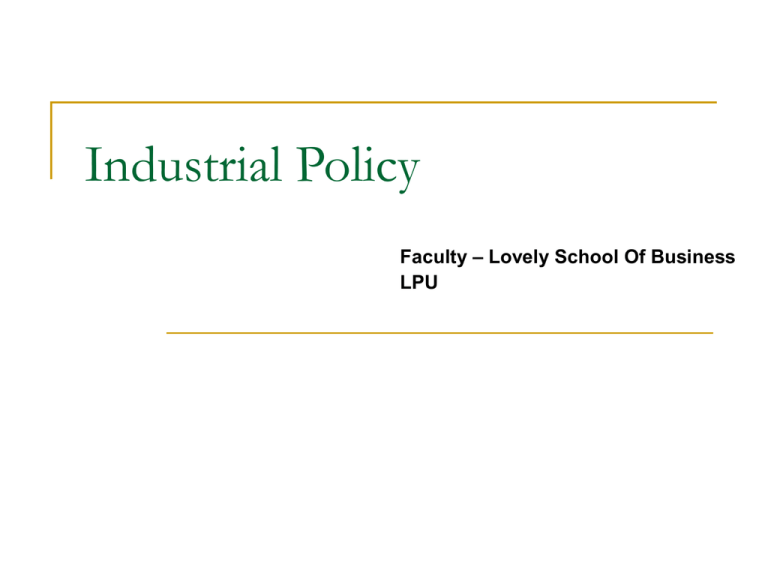
Industrial Policy Faculty – Lovely School Of Business LPU Learning Outcome… Understanding of… Concept of Industrial Policy Main objectives of industrial policy Role & functions of Department of Industrial policy & promotion Industrial Policy 1991 Industrial Policy It covers rules, regulations, principles, policies, & procedures laid down by government for regulating & controlling industrial undertakings in the country. It prescribes the respective roles of the public, private, joint, cooperative large, medium & small scale sectors for the development of industries. Industrial Policy Contd... It incorporates fiscal & monetary policies, tariff policy, labor policy. It shows the government attitude not only towards external assistance but also toward public & private sectors. Main Objectives To maintain a sustained growth in productivity To enhance gainful employment To prevent undue concentration of economic power Main Objectives To achieve optimal utilization of human resources To attain international competitiveness and To transform India into a major partner and player in the global arena Introduction of DIPP The Department of Industrial Policy & Promotion was established in 1995 and has been reconstituted in the year 2000 with the merger of the Department of Industrial Development. Role & Function of DIPP Encouragement to foreign technology collaborations at enterprise level and formulating policy parameters for the same; Administration of Industries (Development & Regulation) Act, 1951 Role & Function of DIPP Formulation of policies relating to Intellectual Property Rights in the fields of Patents, Trademarks, Industrial Designs and Geographical Indications of Goods and administration of regulations, rules made there under Role & Function of DIPP Promoting industrial development of industrially backward areas and the North Eastern Region including International Co-operation for industrial partnerships and Promotion of productivity, quality and technical cooperation. Industrial Policies Industrial Policy Resolution of 1948 Industrial Policy Resolution of 1956 Industrial Policy Resolution of 1973 Industrial Policy Resolution of 1977 Industrial Policy Resolution of 1980 The New Industrial Policy of 1991 Industrial Policy 1991 Policy focus is on – Deregulating Indian industry; Allowing the industry freedom and flexibility in responding to market forces and Providing a policy regime that facilitates and fosters growth of Indian industry. Industrial Policy 1991 In pursuit of the industrial objectives, Government decided to take a series of initiatives in respect of the policies relating to the following areas: Industrial Licensing Foreign Investment Foreign Technology Agreements Public Sector Policy MRTP Act Industrial Licensing Policy The Industrial Policy Resolution of 1956 identified the following three categories of industries: Those that would be reserved for development in public sector. Those that would be permitted for development through private enterprise with or without State participation. Those in which investment initiatives would ordinarily emanate from private entrepreneurs. Industrial Licensing Policy Industrial Licensing is governed by the Industries (Development & Regulation) Act, 1951. Industrial licensing was abolished for all industries, except those specified (18 industries), irrespective of levels of investment. Foreign Investment Limit on foreign equity holdings raised from 40% to 51% in a wide range of industries Foreign Equity Proposals need not to be accompanied by Foreign Technology Transfer Agreement Procedure for FDI streamlined by creating a Foreign Investment Promotion Board to consider individual application case by case Foreign Technology Agreements Foreign technology agreements in highpriority industries upto Rs. 1 crore were given automatic permission. No permission was required for hiring foreign technicians and foreign testing of indigenously developed technologies. Public Sector Policy List of industries reserved for the public (Schedule A) reduced from 17 to 8 List of sector reserved for dominance by public sector (Schedule B) effectively abolished Disinvestment in selected public sector enterprise to raise finance for development, bring in greater accountability & help create a new culture in their working for improved efficiency MRTP Act Removed the threshold limits of assets in respect of MRTP companies and dominant undertakings Eliminated the requirement of prior approval of Central Government for Establishment of new undertakings Expansion of undertakings Merger, Amalgamation and Takeover Appointment of Directors under certain circumstances. The newly empowered MRTP Commission will be authorised to initiative investigations on complaints received from individual consumers or classes of consumers in regard to monopolistic, restrictive and unfair trade practices.
